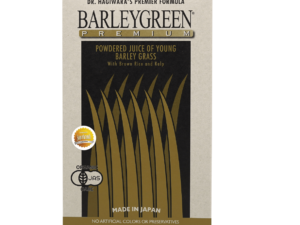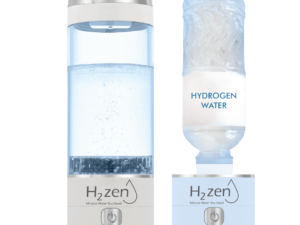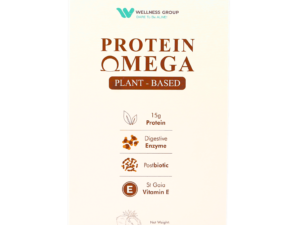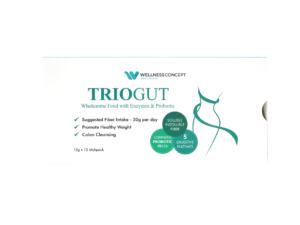What’s the Difference Between Probiotics and Probiotics? – Wellness Group
Have you ever wondered why some supplements boost digestion while others simply support it? The answer lies in understanding probiotics and prebiotics—two terms often confused but with distinct roles in gut health.
Probiotics are live bacteria that enhance the microbiome, while prebiotics act as food for these beneficial microbes. Wellness Group highlights how both work together to improve immunity and nutrient absorption.
Supermarkets and pharmacies now stock countless options, yet many shoppers struggle to choose wisely. Knowing the difference ensures better decisions for long-term wellness.
Key Takeaways
- Probiotics are live microorganisms that benefit digestion and immunity.
- Prebiotics are fibers that nourish probiotics in the gut.
- A balanced microbiome supports overall health and disease prevention.
- Wellness Group emphasizes education on gut-friendly supplements.
- Food sources differ—yogurt contains probiotics, while garlic offers prebiotics.
Introduction to Probiotics and Prebiotics
Your gut is home to trillions of tiny helpers working for your well-being. This community, called the gut microbiome, includes bacteria, fungi, and other microorganisms that influence digestion, immunity, and even mood.

Click to 了解更多
Modern lifestyles often disrupt this balance. Antibiotics, processed foods, and stress can lead to dysbiosis—a microbial imbalance linked to IBS, eczema, and bloating. Restoring harmony requires understanding two allies: probiotics and prebiotics.
“A diverse microbiome supports everything from nutrient absorption to mental clarity.”
Probiotics are live bacteria that replenish beneficial microbes. Think of them as reinforcements for your gut army. Prebiotics, meanwhile, are fibers that feed these microbes, helping them thrive. Together, they form a powerhouse duo for health.
Wellness Group advocates a holistic approach. Combining probiotic-rich foods with a balanced diet ensures lasting results. Small changes, like adding yogurt or garlic, can make a big difference.
- Microbiome diversity shifts with age, diet, and environment.
- Dysbiosis may contribute to chronic conditions if unchecked.
- Both supplements and foods can restore microbial balance.
Knowing how probiotics and prebiotics work empowers smarter choices for long-term wellness. Your gut—and overall health—will thank you.
Defining Probiotics and Prebiotics
Gut health relies on two powerful allies working in harmony. While often confused, probiotics and prebiotics serve unique roles in maintaining a thriving microbiome.
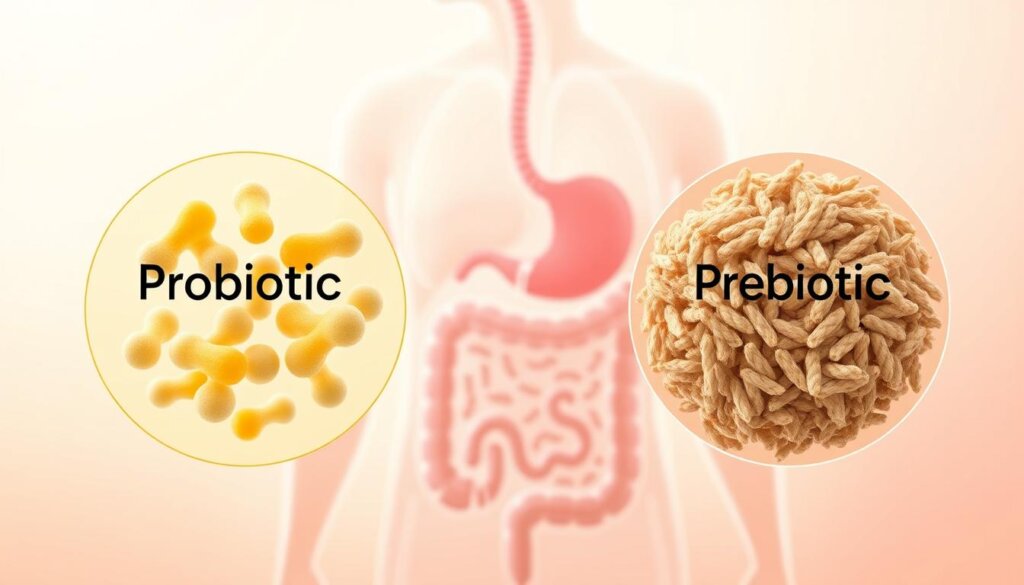
What Are Probiotics?
The World Health Organization defines probiotics as live microorganisms that confer health benefits when consumed. Strains like Lactobacillus and Bifidobacterium are common in yogurt, kefir, and kimchi.
These bacteria must survive stomach acid to colonize the gut. Not all fermented foods contain probiotics—only those with live cultures post-processing.
What Are Prebiotics?
Prebiotics are indigestible fibers that feed beneficial gut bacteria. Inulin (found in onions) and resistant starch (in bananas) ferment in the colon, promoting microbial growth.
Unlike probiotics, prebiotics aren’t live organisms. They’re naturally abundant in whole foods like garlic, asparagus, and oats.
“Synbiotics—combining probiotics and prebiotics—enhance microbial survival and activity.”
- Supplemental vs. natural: Pills offer concentrated strains, while foods provide additional nutrients.
- Common myth: Pasteurized sauerkraut lacks live cultures unless labeled “raw.”
Key Differences Between Probiotics and Prebiotics
Many people mix up probiotics and prebiotics, but they serve different purposes in gut health. One replenishes beneficial bacteria, while the other fuels their growth. Recognizing these distinctions helps optimize digestive wellness.
Function in the Gut
Probiotics are live microbes that colonize the intestines. Strains like Lactobacillus directly boost microbiome diversity, aiding digestion and the immune system.
Prebiotics, however, are indigestible fibers. They act as fertilizer for existing gut bacteria, promoting their activity. Think of probiotics as seeds and prebiotics as soil nutrients.
- Post-antibiotic care: Antibiotics reduce microbial diversity. Probiotic supplements may help, but prebiotics enhance their survival.
- Synergy: Combining both (called synbiotics) strengthens gut resilience against infections.
Sources and Forms
Probiotics thrive in fermented foods like yogurt, kefir, and unpasteurized sauerkraut. Supplements offer concentrated strains but check labels—heat processing can kill live cultures.
Prebiotics abound in fibrous plants: garlic, onions, bananas, and oats. These are shelf-stable and survive cooking better than probiotics.
“For Malaysians, Wellness Group recommends 1–10 billion CFU probiotics daily and 5g prebiotics from whole foods.”

Click to 了解更多
Pairing kimchi (probiotic) with a barley salad (prebiotic) creates a gut-friendly meal. Small tweaks like this support long-term health without confusion.
Health Benefits of Probiotics and Prebiotics
Balancing gut health goes beyond digestion—it impacts overall wellness. Probiotics and prebiotics work together to create a thriving microbiome, offering multiple benefits for the body.
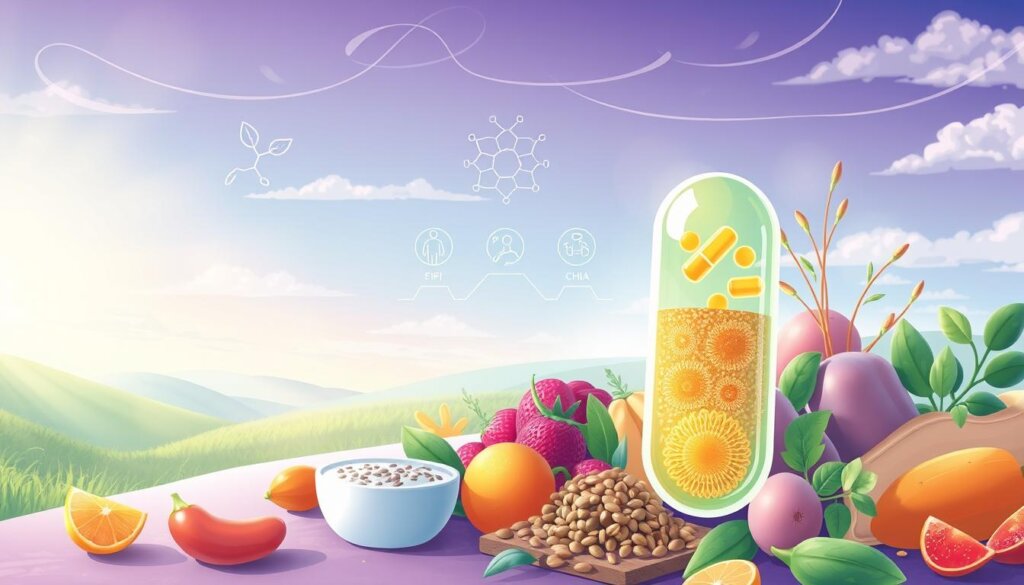
Gut Health and Digestion
Probiotics help maintain a healthy gut lining, reducing inflammation and improving nutrient absorption. Studies show they can ease constipation, diarrhea, and IBS symptoms by restoring microbial balance.
Prebiotics play a different role. They feed beneficial bacteria, producing short-chain fatty acids that protect against colorectal cancer. Foods like garlic and oats enhance bowel regularity naturally.
- Digestive relief: Certain probiotic strains reduce bloating and gas in sensitive individuals.
- Nutrient boost: A balanced microbiome helps break down complex foods for better vitamin uptake.
- Research insight: Synbiotics (probiotic + prebiotic combos) show promise for managing diabetes.
Immune System Support
Did you know 70% of immune cells reside in the gut? Probiotics strengthen the immune system by crowding out harmful pathogens. Regular intake may lower infection risks.
Prebiotics also contribute by reducing gut inflammation, a key factor in autoimmune conditions. However, claims that probiotics alone cure eczema remain unproven.
“A diverse gut microbiome acts as the body’s first defense against illnesses.”
For Malaysians, incorporating fermented foods and fiber-rich plants offers dual benefits. While probiotics add helpful bacteria, prebiotics ensure their survival—creating lasting health advantages.
Learn more about probiotic research from trusted medical sources.
Foods and Supplements Rich in Probiotics and Prebiotics
Malaysians have access to unique local superfoods packed with microbiome-boosting power. From fermented staples to fibrous plants, incorporating these into dietary habits supports gut resilience. Here’s how to choose wisely.
Probiotic-Rich Foods
Yogurt tops the list—but only if labeled “live cultures.” Pasteurization kills beneficial bacteria, so opt for unpasteurized versions. Locally loved options include:
- Tempeh: Fermented soybeans with Bifidobacterium strains.
- Kimchi: Spicy cabbage rich in Lactobacillus.
- Amasi: A tangy milk-based drink popular in Southeast Asia.
Shelf life matters. Refrigerated sauerkraut retains live cultures, while canned versions often don’t.
Prebiotic-Rich Foods
These fibers fuel gut bacteria without needing refrigeration. Favorites in Malaysia:
- Banana blossoms: High in inulin, perfect for stir-fries.
- Jackfruit: Resistant starch supports microbial diversity.
- Garlic: Allicin compounds act as prebiotic boosters.
“Pairing tempeh (probiotic) with moringa leaves (prebiotic) creates a symbiotic gut feast.”
Supplements: What to Look For
Supplements offer convenience but vary in quality. Key checks:
- CFU count: 1–10 billion colony-forming units ensure potency.
- Certifications: USP or Non-GMO labels guarantee purity.
- Storage: Some require refrigeration; others are shelf-stable.
For beginners, Wellness Group’s probiotic bundles simplify choices with strain-specific blends.
Safety and Side Effects
While probiotics and prebiotics offer numerous benefits, they aren’t risk-free. Certain conditions or medications may increase sensitivity to these supplements. Recognizing potential side effects helps users make informed choices.
Potential Risks of Probiotics
For most people, probiotics are safe. However, immunocompromised individuals face higher risk of infections. Temporary bloating or worsened symptoms (called “probiotic resistance”) may occur during adjustment.
- Critical illness: Avoid probiotics if hospitalized or severely immunodeficient.
- Medication interactions: Consult a doctor when taking immunosuppressants.
- Quality matters: Malaysian FDA-approved brands reduce contamination risks.
Considerations for Prebiotics
Prebiotics like inulin can cause gas if overconsumed. Those with IBS or FODMAP intolerance should start with small doses.
“Prebiotic fibers ferment in the gut, which may trigger discomfort in sensitive individuals.”
- Gradual intake: Increase fiber slowly to minimize bloating.
- Alternative sources: Low-FODMAP options like oats are gentler.
For personalized guidance, Wellness Group’s nutritionists (+60 12-382 2655) tailor recommendations to your health profile.
Conclusion
Optimal digestion stems from combining the right microbial allies with their fuel. Probiotics are live microbes, while prebiotics feed them—a partnership critical for gut health.
Malaysians can boost their diet with local staples like tempeh and banana blossoms. These foods offer a natural way to sustain microbiome balance without supplements.
Wellness Group tailors gut-friendly plans backed by research. For personalized advice, message them via WhatsApp at +60 12-382 2655. Consultations are available Mon–Fri (9:30am–6:30pm) and Sat–Sun (10am–5pm).
FAQ
Are probiotics and prebiotics the same thing?
No, they serve different roles. Probiotics are live beneficial bacteria found in foods like yogurt and supplements. Prebiotics are fibers that feed the good bacteria already in the gut.
What foods contain probiotics?
Fermented foods like kimchi, sauerkraut, kefir, and miso are rich in probiotics. Yogurt with live cultures is another great source.
Can taking probiotics help with digestive issues?
Research suggests they may improve gut health, ease bloating, and support regular bowel movements. However, results vary by strain and individual.
Are there any side effects from probiotics?
Some people experience mild gas or bloating when first taking them. Those with weakened immune systems should consult a doctor before use.
How do prebiotics benefit the body?
Prebiotics help nourish beneficial gut bacteria, promoting digestion, nutrient absorption, and even immune system function.
What are common sources of prebiotics?
Foods like garlic, onions, bananas, and whole grains contain prebiotic fibers that support a healthy microbiome.
Should I take probiotic supplements daily?
It depends on individual needs. Some benefit from daily use, while others only need them during digestive distress. A healthcare provider can offer guidance.
Can children take probiotics?
Yes, but dosage and strains should be age-appropriate. Pediatricians often recommend specific products for kids.

Khloe Tan
Khloe Tan is a Certified Nutritionist, Corporate Wellness Trainer, and Holistic Health Specialist with over 15 years of experience in the health and wellness industry. She has delivered more than 100 talks nationwide, inspiring and educating diverse audiences on nutrition, lifestyle, and sustainable wellness. Her work has positively impacted over 3,000 lives, and she continues to champion holistic approaches to well-being in both corporate and personal settings.

